Presidential Innovation Award for Environmental Educators (PIAEE) 2016 Winners
EPA Region 1
No 2016 winners.
EPA Region 2
David Amidon, LaFayette Jr/Sr High School
LaFayette, New York
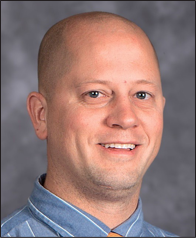 David Amidon has been teaching physical and life sciences to middle school students since 1999. During this time, he has engaged students in a variety of lessons to improve their understanding of the human impacts to ecosystems and environmental sustainability. Several of David’s lessons integrate technology and environmental education.
David Amidon has been teaching physical and life sciences to middle school students since 1999. During this time, he has engaged students in a variety of lessons to improve their understanding of the human impacts to ecosystems and environmental sustainability. Several of David’s lessons integrate technology and environmental education.
Using tablet computers, students identify invasive plant species on the school grounds; or complete a simulation of toxin bioaccumulation, recording toxin levels to instantly create data charts and graphs.
His Green Building Initiative used the school’s renovation as an opportunity to help students research the feasibility and costs associated with green building and infrastructure, including new lighting and green roofs. In collaboration with interns from the Sustainable Materials Management Stewardship Program at Syracuse University called My Impact, students analyze their personal waste generation habits and learn about aspects of sustainability like composting, recycling, and repurposing.
In another of David’s lessons, his students investigate historical factors contributing to the pollution of a nearby Superfund site, Onondaga Lake. David tries to continually create new projects or find new groups for his students to work with.
David hopes to integrate his lessons, projects, and approach at the school district level. He is already developing a project to convert a drainage basin into a rain garden. Through his participation in the New York State Master Teacher Program, David is helping to convene a Youth Climate Summit, bringing together students from 20 districts.
Shakira Provasoli, Manhattan School for Children
New York, New York City
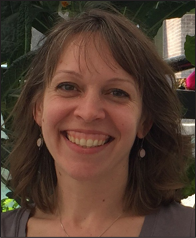 Shakira Provasoli has been a kindergarten–12th grade educator in New York City for 16 years. Over the past five years, she developed a curriculum centered on her school’s greenhouse that incorporates the New York City Science Scope and Sequence. Instead of covering compartmentalized topics or lessons, Shakira uses long-term projects to let students delve into topics and generate in-depth knowledge. Curriculum topics include systems and cycles, environmental interaction, sustainable solutions, and sustainable cities.
Shakira Provasoli has been a kindergarten–12th grade educator in New York City for 16 years. Over the past five years, she developed a curriculum centered on her school’s greenhouse that incorporates the New York City Science Scope and Sequence. Instead of covering compartmentalized topics or lessons, Shakira uses long-term projects to let students delve into topics and generate in-depth knowledge. Curriculum topics include systems and cycles, environmental interaction, sustainable solutions, and sustainable cities.
Each year, kindergarten–5th grade students revisit the same curriculum topics or themes using different subject matter; each subsequent year requires more initiative and involvement from the students. In kindergarten and first grade classrooms, Shakira reads to students about subject matter selected by the entire class. In the second grade and beyond, groups of students identify a problem and Shakira teaches them how to use books, internet articles, and interviews to conduct research. Students then work together to brainstorm multiple solutions to the problem and present their solutions using posters, videos, public service announcements, letters, models, songs, plays, or board games.
Her fourth grade classes collaborate to build hydroponic systems from an air pump, bike needles, plastic tubing, and water bottles, with each student tasked to help with one specific part of the construction. Students then test the effect of water pollution on the growth of plants. Shakira always emphasizes both individual achievement and collaboration among students.
Shakira extends her teaching scope outside of the kindergarten–5th grade classroom, as well. She taught a 36-hour “Water, Energy, and Waste: Integrating Themes of Sustainability into Your Classroom” course for the After School Professional Development Program. Shakira also taught a hydroponics workshop at the Environmental Study Center in New York City. She currently offers workshops to teachers to help with management, operations, and curriculum for greenhouses at their respective schools.
EPA Region 3
Christopher Freeman, Floyd E. Kellam High
Virginia Beach, VA
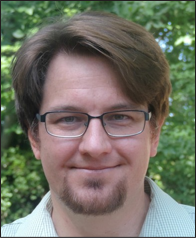 For 13 years, Christopher Freeman has challenged his 11th and 12th grade students to address real- world problems and engaged them in thoughtful discourse, idea generation, experimentation, and collaboration. He believes in a student-centric approach that empowers students to make a difference in their community by becoming engaged environmental stewards and devising solutions. As a result, many of his projects involve the local community.
For 13 years, Christopher Freeman has challenged his 11th and 12th grade students to address real- world problems and engaged them in thoughtful discourse, idea generation, experimentation, and collaboration. He believes in a student-centric approach that empowers students to make a difference in their community by becoming engaged environmental stewards and devising solutions. As a result, many of his projects involve the local community.
In one instance, Christopher convinced an architectural firm to collaborate with his students on the design of a new school. His students worked with architects, engineers, and each other to develop designs and create scaled three-dimensional models of an edible garden, an outdoor classroom/gathering area, and a natural marsh water purification site.
In another instance, he installed a 200-gallon aquaponics system with a soilless garden bed in his classroom, because many of his students’ families are involved in farming. After students learned that high levels of nitric acid were hurting the fish, they ran tests, researched the cause of the problem, and developed a solution involving potassium bicarbonate. Christopher has found that current environmental events are among the most important drivers of content in his classroom.
At a broader level, Christopher created the Kellam High School’s Climate Change Mitigation and Adaptation Challenge in which students worked together to create solutions to help Hamptons Roads cope with climate change and sea level rise. He also helped promote an academic and behavioral shift by convincing the administration to offer an Advanced Placement Environmental Science class and establishing two environmental clubs: the Kellam Agricultural Engineers and the Pollen-Nation clubs. He envisions expanding environmental education into other subject areas in order to increase environmental literacy.
Lolita Cariaso Kiorpes, North Point High School
Waldorf, MD
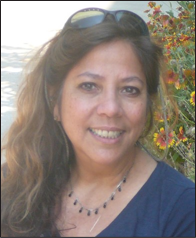 For almost two decades, Lolita Kiorpes has taught high school students the importance of a healthy environment through appreciation, learning, and enjoyment of the outdoors. She places a strong emphasis on her students getting outdoors, participating in outdoor activities, and taking leadership and planning roles. She gives students numerous opportunities to experience the environment through canoeing, water quality testing, macroinvertebrate studies, trash collection, and stream cleaning.
For almost two decades, Lolita Kiorpes has taught high school students the importance of a healthy environment through appreciation, learning, and enjoyment of the outdoors. She places a strong emphasis on her students getting outdoors, participating in outdoor activities, and taking leadership and planning roles. She gives students numerous opportunities to experience the environment through canoeing, water quality testing, macroinvertebrate studies, trash collection, and stream cleaning.
Her students have educated community members about National Marine Sanctuaries, as well as planted native flower gardens and trees to increase awareness of climate change, watershed health, and ocean health. When she cannot bring her students outdoors, she seeks out ways to bring the environment into her classroom.
Through the Department of Natural Resources-sponsored programs Raising Horseshoe Crabs in the Classroom and Trout in the Classroom, her students have learned the importance of sustainability, healthy ecosystems, and the vitality of saltwater habitats. These programs allow students to learn real-world scientific and technical skills such as caring for animals and conducting water tests.
Last year Lolita and her students became the first National Oceanic and Atmospheric Administration (NOAA) Ocean Guardian School in Maryland. She and a team of students conducted outreach to teach other students what they had learned about watershed and ocean health, National Marine Sanctuaries, climate change, and environmental stewardship. Lolita also newly incorporated climate change lessons into her curriculum. These lessons engage her class in discussions on how California’s drought has altered the water cycle, and vegetative, animal, and watershed health; and how the ramifications of these changes spread far beyond California’s borders. Lolita has many more field outings planned through her NOAA Ocean Guardian School Grant, and aims to bring environmental awareness to as many students and community members as possible.
EPA Region 4
No 2016 winners.
EPA Region 5
Kip Brady, New Philadelphia High School
New Philadephia, Ohio
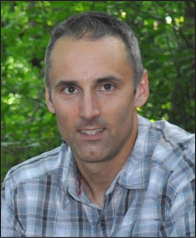 At New Philadelphia High School, Kip Brady has developed engaging field studies that immerse his 10th, 11th, and 12th grade students in authentic investigations of their local environment and ecosystems. Most of the environmental education experiences that he developed involve the scientific study of how human land use influences biological diversity. His students have conducted multiple studies of post-mining ecosystems and restoration.
At New Philadelphia High School, Kip Brady has developed engaging field studies that immerse his 10th, 11th, and 12th grade students in authentic investigations of their local environment and ecosystems. Most of the environmental education experiences that he developed involve the scientific study of how human land use influences biological diversity. His students have conducted multiple studies of post-mining ecosystems and restoration.
During the 2012–2013 school year, he coordinated with landowners across Tuscarawas County so that over 700 students could examine how surface coal mining history has affected salamander diversity. This project allowed students to learn about local salamander diversity, the ecology and physiology of salamanders, the importance of forest integrity to forest-dependent species, experimental design, and how to analyze and interpret replicated data.
Kip also found ways for students at all grade levels to engage and involve their families in learning about forest ecology. He leads nocturnal survey events during spring and autumn evenings at local nature centers. Before going out to explore the forest, these events brief participants about forest ecology, species they are likely to encounter, and proper etiquette for nocturnal surveying.
Kip has conducted numerous professional development activities at the district, county, and state levels to share his ideas for environmental education. In addition to providing experiences that combine science and environmental education, he has demonstrated to students and teachers that learning is an ongoing process.
Ronald Hochstrasser, Sycamore Community High School
Cincinnati, Ohio
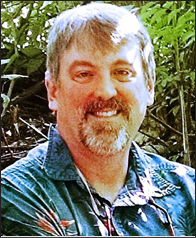 Ronald Hochstrasser has been an educator for almost three decades. At Sycamore Community High School, he has worked to create a space where his urban and suburban students can increase their awareness of nature. Ronald and his students have constructed several gardens, each with a different function. One garden sequesters and filters water from the school parking lot, another provides a milkweed habitat for butterflies, and another provides fresh herbs for school meals.
Ronald Hochstrasser has been an educator for almost three decades. At Sycamore Community High School, he has worked to create a space where his urban and suburban students can increase their awareness of nature. Ronald and his students have constructed several gardens, each with a different function. One garden sequesters and filters water from the school parking lot, another provides a milkweed habitat for butterflies, and another provides fresh herbs for school meals.
Many of Ronald’s projects rely on the numerous trees that he, his students, and community volunteers have planted over the years. In one project, students use forestry tools such as a Biltmore stick to measure trees. In another forestry-related project, students develop their own field guides for local species including mammals, amphibians, reptiles, and birds. Ronald also developed a simulated stream due to the lack of any in the immediate area. Students investigate the health of the stream and develop a pollution profile by collecting data on water quality and hundreds of macroinvertebrates.
Ronald has increased the opportunities for students, parents, and community members to immerse themselves in nature through extra-curricular activities. He began a birdseed sale through the school’s environmental club. He also partnered with the Ohio River Foundation so that students can construct rain gardens throughout the community, monitor local water quality, and assist in the removal of invasive species in parks and natural spaces. He is currently integrating broader subject matter (e.g., foreign languages), additional grade levels, more diverse learners (e.g., special needs students), and more expansive geographies (e.g., school, district, community) to develop rain gardens and advance environmental stewardship education.
EPA Region 6
No 2016 winners.
EPA Region 7
Shawn Graham, Accelere Program Omaha Public Schools
Omaha, Nebraska
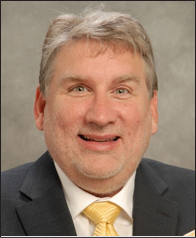 Shawn Graham has been teaching 11th and 12th grade students for 13 years. His two main goals are to generate a deeper understanding of course topics by connecting his students with the environment, and encourage students to pursue life-long learning through post-secondary education. Three years ago, Shawn created the Accelere Job Shadowing/Internship program, which identifies students’ interests and matches students with community partners in relevant fields.
Shawn Graham has been teaching 11th and 12th grade students for 13 years. His two main goals are to generate a deeper understanding of course topics by connecting his students with the environment, and encourage students to pursue life-long learning through post-secondary education. Three years ago, Shawn created the Accelere Job Shadowing/Internship program, which identifies students’ interests and matches students with community partners in relevant fields.
Since the creation of Accelere, Shawn has taken advantage of these partnerships in a number of classroom projects. For example, with the Nebraska Games and Parks Hatchery, students utilized the school’s new hydroponic laboratory to assess ways to increase food production while maintaining a healthy ecosystem for White Nile Tilapia. Shawn also coordinated with city staff, students, and Omaha Permaculture personnel to “green” vacant and unused properties. In one year, his students grew an estimated $2,000 of plants from these properties for use by the city. In conjunction with the Scott Aquarium at the Omaha Henry Doorly Zoo, his students assessed water quality, analyzed data, and made recommendations to improve water quality.
In addition to offering an after-school explorations option, where students can work on their own projects, Shawn engages his student in extra- curricular activities that benefit the community. At the Spring Festival, he and his students distributed free pollinator and vegetable plants to the public.
EPA Region 8
Heather Berry, Highlands Ranch High School
Highlands Ranch, Colorado
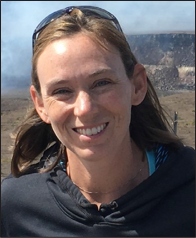 For a decade, Heather Berry has ignited her students’ passion about science and the environment through hands-on activities, connecting current events with classroom subject matter, and her unique “Project Based Learning Series.” By challenging her students to make their school or community more environmentally sustainable, they have developed several interesting year-long projects, including creating recycling and composting programs, using outdoor classrooms, installing a solar- powered cell phone charging station, and working with elementary schools to increase their environmental sustainability.
For a decade, Heather Berry has ignited her students’ passion about science and the environment through hands-on activities, connecting current events with classroom subject matter, and her unique “Project Based Learning Series.” By challenging her students to make their school or community more environmentally sustainable, they have developed several interesting year-long projects, including creating recycling and composting programs, using outdoor classrooms, installing a solar- powered cell phone charging station, and working with elementary schools to increase their environmental sustainability.
Her students also complete research projects on population growth, environmental biodiversity, and energy consumption and savings that require consideration of economic, religious, cultural, and governmental topics at the country level. Heather recently began an international collaboration opportunity; her students communicate about their daily lives and share sustainability projects with a school in Taiwan. In a similar fashion, she has extended environmental education beyond the classroom by taking her students on local, national, and international field trips. She and her co-workers have taken students to Hawaii, Iceland, the Galapagos Islands, and elsewhere to explore human impacts on these areas and participate in volunteer activities to improve the environment.
Heather participates in numerous speaking events, surveys fellow teachers to help integrate environmental curriculum into other content areas, and serves on a district Sustainability Steering Committee to add environmental education to other schools’ curriculums. She is planning a retreat with at least one teacher from each of the district’s schools to help broaden the scope of environmental education. Heather is also developing a partnership with a middle school in Taiwan so that her students can correspond on tree- planting and pond-building projects.
Monika Cloys, Lake County High School
Leadville, Colorado
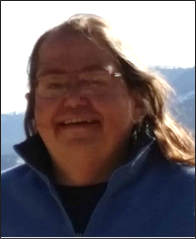 Monika Cloys has assumed many educational roles in her 11-year teaching career, including alternative program coordinator, science teacher, and online instructor. She uses curriculum ideas gained through her graduate work to develop educational units focused on citizen science and key environmental issues. These units require students to investigate real data and, in-turn, build critical thinking skills.
Monika Cloys has assumed many educational roles in her 11-year teaching career, including alternative program coordinator, science teacher, and online instructor. She uses curriculum ideas gained through her graduate work to develop educational units focused on citizen science and key environmental issues. These units require students to investigate real data and, in-turn, build critical thinking skills.
In Our Changing Climate, her students use current scientific data and data collected by indigenous people to study climate change in the Arctic. This project involves data analysis, hands-on science lessons, as well as student- led investigations and presentations. In her Ocean Journeys unit, students used the U.S. Satellite Laboratory’s Animals in Curriculum-based Ecosystem Studies (ACES) curriculum to learn about the role of oceans in human and animal journeys. The community service portion of her curriculum has expanded greatly in recent years as she has sought ways to get students in the field whenever possible. Her students conducted a waste audit for a recycling project and successfully petitioned multiple stakeholders to begin a composting initiative in order to reduce waste.
Outside of the classroom, Monika was involved in a teacher workshop to create lesson plans revolving around the district’s composting initiative. Additionally, it is her hope that all school districts in the upper Arkansas River Valley will use her district’s environmental educational model for soil science and begin composting initiatives.
EPA Region 9
Jose Flores, Brawley Union High School
Brawley, California
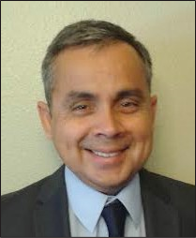 Jose Flores has been an educator for 25 years, filling numerous additional roles to share his experience and the exemplary environmental work of his students. His students have participated in programs such as the U.S. Environmental Protection Agency’s Indoor Air Quality Tools for Schools Action Kit, Salton Sea Now! – A Tipping Point, Kids Making Sense’s AirBeam air quality monitoring, Identifying Violations Affecting Neighborhood’s (IVAN’s) environmental violation crowdsourcing, California’s Blueprint for Environmental Literacy, and Revitalizing K-12 Civic Learning in California: A Blueprint for Action.
Jose Flores has been an educator for 25 years, filling numerous additional roles to share his experience and the exemplary environmental work of his students. His students have participated in programs such as the U.S. Environmental Protection Agency’s Indoor Air Quality Tools for Schools Action Kit, Salton Sea Now! – A Tipping Point, Kids Making Sense’s AirBeam air quality monitoring, Identifying Violations Affecting Neighborhood’s (IVAN’s) environmental violation crowdsourcing, California’s Blueprint for Environmental Literacy, and Revitalizing K-12 Civic Learning in California: A Blueprint for Action.
His students have been able to apply and transfer their education in Next Generation Science Standards to government and civics subject matter. Jose’s students regularly correspond and interact with government officials, and engage in environmental topics relevant to their community. For instance, they tracked household water consumption during the recent drought in California. Recently, Jose’s students co-hosted an event with Comite Civico del Valle to teach over 300 individuals nationwide about issues such as diesel fuel, pollution, asthma, indoor air quality, and pesticides.
Jose has supplemented his classroom contributions by serving on the California Task Force on K-12 Civic Learning, California’s Environmental Literacy Steering Committee, and the California Department of Education’s Instructional Quality Commission. He has also advocated for more environmental education throughout other departments, and trained fellow teachers on concepts such as water, air, solar, and pesticides.
Jeff Rivero, Yosemite High School
Merced, California
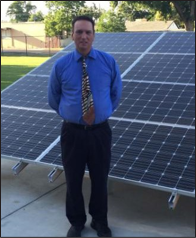 Jeff Rivero is a U.S. History and Current Events teacher at Yosemite High School who has combined environmental education with his curriculum to teach students about policies, behaviors, and decisions involving both economics and natural resources. He teaches 88 current events lessons, covering topics such as energy use, fuel resources, renewable energy, climate change, pollution, waste water treatment, and overpopulation. Examples of his students’ projects include creating a campus policy to conserve water, researching plastic bags made from protein, and advocating for drought-resistant landscaping on part of the school campus.
Jeff Rivero is a U.S. History and Current Events teacher at Yosemite High School who has combined environmental education with his curriculum to teach students about policies, behaviors, and decisions involving both economics and natural resources. He teaches 88 current events lessons, covering topics such as energy use, fuel resources, renewable energy, climate change, pollution, waste water treatment, and overpopulation. Examples of his students’ projects include creating a campus policy to conserve water, researching plastic bags made from protein, and advocating for drought-resistant landscaping on part of the school campus.
His students explore their own areas of interest, and through an after-school program called the Dragon Academy, Jeff offers after-school opportunities in worm farming, composting and recycling, gardening, social justice, and community service projects. These community service projects include volunteering to install low- to no-cost solar electricity systems through a partnership with GRID Alternatives. Jeff ensures that his students improve their environmental literacy by taking them outside of the classroom.
He has taken his students to Yosemite National Park; Santa Cruz, CA; and Monterey Bay’s Aquarium to teach lessons on ocean life, the effects of plastic on sea life, and natural resource exploitation. Jeff has also taken his students to speak with government staff about environmental policies such as solar power. He attends conferences and summits throughout the year to integrate the newest information into his classroom.
EPA Region 10
Megan Alameda, Baker Technical Institute
Baker City, Oregon
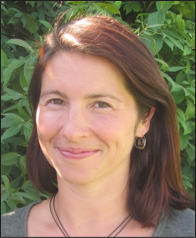 Over the past three years, Megan Alameda has transitioned her teaching from a purely instructional format into a collaborative and interactive process that engages her students in the cleanup of a nearby brownfield. Her students have learned about brownfields, researched and written Requests for Proposals, worked with administrators to select and hire a cleanup firm, reviewed documents related to the cleanup such as the Quality Assurance Project Plan, observed various aspects of the cleanup, and presented their knowledge at a public open house and state brownfield conferences.
Over the past three years, Megan Alameda has transitioned her teaching from a purely instructional format into a collaborative and interactive process that engages her students in the cleanup of a nearby brownfield. Her students have learned about brownfields, researched and written Requests for Proposals, worked with administrators to select and hire a cleanup firm, reviewed documents related to the cleanup such as the Quality Assurance Project Plan, observed various aspects of the cleanup, and presented their knowledge at a public open house and state brownfield conferences.
The project-based nature of her class allows grades 9–12 students to fill roles such as managers, coordinators, specialists, researchers, and presenters that best match their individual strengths. Megan and her students have partnered with various organizations such as the Powder Basin Watershed Council to get students in the field at least once a month and participate in aspects of the brownfield cleanup process.
She has also connected with local businesses and organizations in order to find additional brownfield projects. Megan’s class engages previously disenchanted students who did not anticipate pursuing education beyond high school. She strives to teach students that they have opportunities in the environmental sciences while showing them how the classroom content connects to an environmentally sustainable lifestyle.
Laura Tyler, South Shore PK-9 School
Seattle, Washington
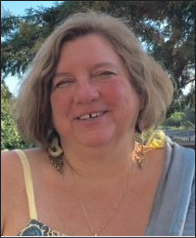 Laura Tyler has spent three decades as an educator helping improve urban students’ environmental understandingandtheenvironmentalsustainability of her school system. Recognizing the importance of creating a connection between nature and her students, and providing urban students with a relaxing natural environment, Laura brings her students on field trips that allow them to see a variety of local ecosystems. Her Solutions and Pollutions unit, for instance, teaches students about water chemistry by having them test water quality at nearby Lake Washington.
Laura Tyler has spent three decades as an educator helping improve urban students’ environmental understandingandtheenvironmentalsustainability of her school system. Recognizing the importance of creating a connection between nature and her students, and providing urban students with a relaxing natural environment, Laura brings her students on field trips that allow them to see a variety of local ecosystems. Her Solutions and Pollutions unit, for instance, teaches students about water chemistry by having them test water quality at nearby Lake Washington.
With the help of the Seattle Parks Department, her students have helped restore part of the East Duwamish Greenbelt. Students set up transect lines to subdivide a plot of land in order to count invasive and native plants, and then remove invasive species and plant native species. Laura also collaborates with Seattle Tilth so that her students learn about soil, farming, livestock, and the variety of crops grown in their area. To ensure her students keep this connection to nature in the classroom, she invites guests to speak about topics such as the importance of clean water for oysters and future improvement plans for local creeks.
In addition to her contributions in the classroom and in the field with her students, Laura has had a major impact on the environmental sustainability of her district and community. When she began teaching 30 years ago, she helped start and grow a four-school recycling program into a recycling and composting program that now exists in every school in the district. She worked with Seattle Public Utilities to pilot a Salmon in the Classroom project that ran for 10 years, and currently serves on the city’s Environmental Education Committee.
2016 PIAEE Honorable Mentions:
- Rosalina Alvarado, Ponce, PR
- Ryan Miller, Arlington, VA
- Jennifer Edwards, Detroit, MI
- Angela Harding, Bloomington, IN
- Alejandrina Mejia, Phoenix, AZ
